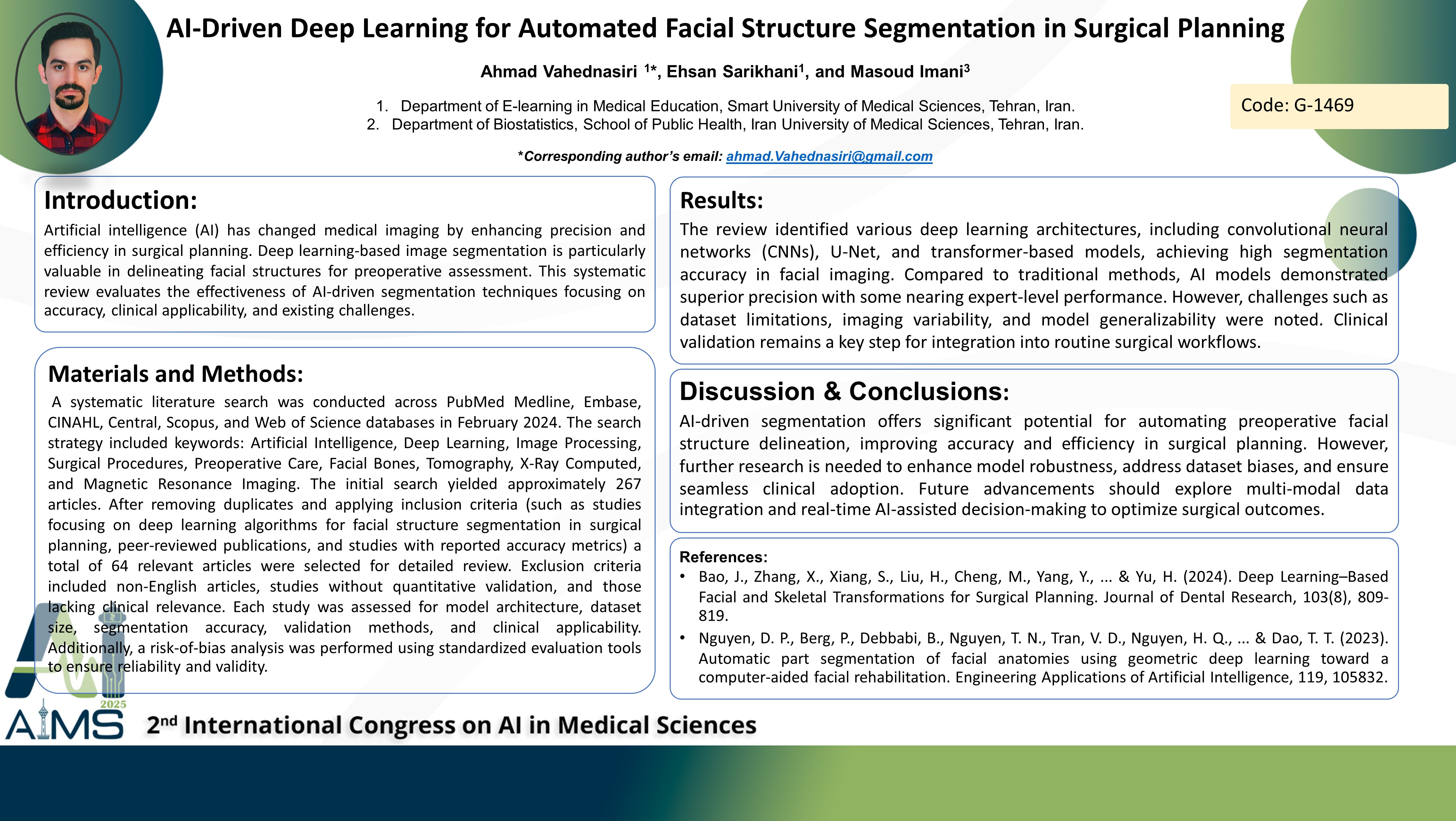AI-Driven Deep Learning for Automated Facial Structure Segmentation in Surgical Planning
Code: G-1469
Authors: Ahmad Vahednasiri * ℗, Ehsan Sarikhani, Masoud Imani
Schedule: Not Scheduled!
Tag: Biomedical Signal Processing
Download: Download Poster
Abstract:
Abstract
Background and aims: Artificial intelligence (AI) has changed medical imaging by enhancing precision and efficiency in surgical planning. Deep learning-based image segmentation is particularly valuable in delineating facial structures for preoperative assessment. This systematic review evaluates the effectiveness of AI-driven segmentation techniques focusing on accuracy, clinical applicability, and existing challenges. Method: A systematic literature search was conducted across PubMed Medline, Embase, CINAHL, Central, Scopus, and Web of Science databases in February 2024. The search strategy included keywords: Artificial Intelligence, Deep Learning, Image Processing, Surgical Procedures, Preoperative Care, Facial Bones, Tomography, X-Ray Computed, and Magnetic Resonance Imaging. The initial search yielded approximately 267 articles. After removing duplicates and applying inclusion criteria (such as studies focusing on deep learning algorithms for facial structure segmentation in surgical planning, peer-reviewed publications, and studies with reported accuracy metrics) a total of 64 relevant articles were selected for detailed review. Exclusion criteria included non-English articles, studies without quantitative validation, and those lacking clinical relevance. Each study was assessed for model architecture, dataset size, segmentation accuracy, validation methods, and clinical applicability. Additionally, a risk-of-bias analysis was performed using standardized evaluation tools to ensure reliability and validity. Results: The review identified various deep learning architectures, including convolutional neural networks (CNNs), U-Net, and transformer-based models, achieving high segmentation accuracy in facial imaging. Compared to traditional methods, AI models demonstrated superior precision with some nearing expert-level performance. However, challenges such as dataset limitations, imaging variability, and model generalizability were noted. Clinical validation remains a key step for integration into routine surgical workflows. Conclusion: AI-driven segmentation offers significant potential for automating preoperative facial structure delineation, improving accuracy and efficiency in surgical planning. However, further research is needed to enhance model robustness, address dataset biases, and ensure seamless clinical adoption. Future advancements should explore multi-modal data integration and real-time AI-assisted decision-making to optimize surgical outcomes.
Keywords
Artificial Intelligence, Deep Learning, Image Processing
